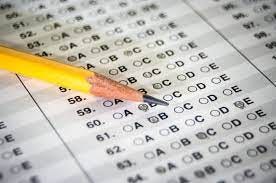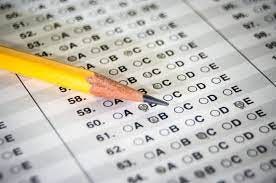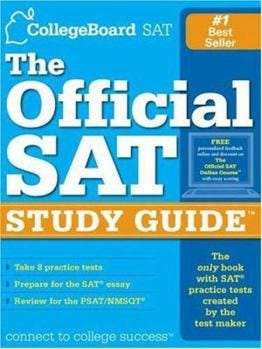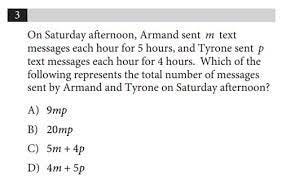The first of a two part series on retaking the SAT test to redeem my poor tests scores from 40 years prior. Part One focuses on prepping and then taking the dreaded SAT. Part 2 will focus on taking the test and the big reveal.
Test Prep
It’s been 40 years since I last heard, “Time’s up, drop your pencils.” I was taking the final pathology boards, marking the end of my 9 years of medical training. As I put down my No. 2 Ticonderogas, I promised I would never take another standardized test. I had endured the multiple choice questions of the PSATs, SATs, ACTs, MCATs, and four different sets of medical boards.
I was a good student based on hard work and good study habits, but I carried the burden of being a bad test taker. The SATs were a high stakes affair, a critical factor in college admission. Even so I don’t recall any frantic prepping. I just made sure my pencils were sharp and had a good eraser. Now the landscape has changed. Determined prepping is the norm. I encouraged my kids to study and hired a tutor. I regret that I became an active participant in a cruel hazing ritual. At the same time, this experience reawakened my smoldering stigma of poor SAT scores that devalued all my hard work, my intelligence reduced to two numbers.
I wondered about the effect of 40 years of life experience on the SAT test – was I smarter than I was at 18, or would a 40-year hiatus of math and grammar doom any efforts? Could I redeem myself? There was only one way to find out – sign up and take the SAT again.
I thought a college degree might disqualify me from an SAT redo but it wasn’t a problem. The online form asked for my current grade. The options included 7th-14th grade, but then I found a box that said, “not currently in high school.” This seemed like an honest answer so I checked that. Another section asked the date of my high school graduation. The year 1970 was nowhere to be found. I called the help line and a nice young man walked me through the process, never asking the obvious question of why a 58-year-old was taking the SAT. My husband said he would rather have a root canal, but then he actually did have a root canal and found it relatively painless, so he revised his thinking and said he’d rather have the more age-appropriate colonoscopy. Given the high stakes of the SAT, I was anticipating some elaborate form of identification, perhaps involving a fingerprint or retinal scan, but for $47 dollars I was given an admission ticket and told to show up with a picture ID.
My next step was defining the ground rules for this experiment, specifically my preparation – would I go in cold, do a little self-help, or hire a tutor? Critics point out that prepping or coaching undermines the point of the test by teaching test-taking skills so that students can “game the system.”
Well, here is where I disagree – if there is one thing that I’ve learned in the past 40 years, it is the importance of understanding process, “gaming the system” if you wil. I would argue that this is a basic life skill. Starting as a freshman in college, you need to understand the system to get the best classes (i.e. no Friday or Monday classes) or work the lottery system to get a decent dorm room.
Gaming the system is an essential strategy throughout your life. Before I start any work project, I consider who the players are and their individual incentives. Otherwise, it’s like sending batters up to the plate without telling them to practice hitting curve balls.
I hoped my life experience would be an asset, so I decided not to take the test “cold.” I was going to prep. Prep hard. (The ulterior motive is that I didn’t want to totally humiliate myself.) My test date was six months away, plenty of time to dust off moldering algebra and grammar skills. As the SAT website advised, I had better “hop to it.” (Is that a cliché, simile or metaphor?)
I bought the official SAT Study Guide and trudged through each section.
I started with the math section, reasoning that math is a universal life skill that might still lie within reach. The first few algebra questions were easy, solving some simple equations, and I gave a fist pump when I dredged up the ability to solve a quadratic equation.
But by problem 10, I realized the Geometry I had loved with its adorable little proofs has had absolutely no part in my life for the past 40 years. None – total disuse atrophy. I rummaged through the deep recesses of my gray matter in a flailing attempt to revive long forgotten skills. It reminded me of the ending of the first Indiana Jones movie, when the curator puts the box containing the magic stones in a vast and dusty warehouse. That warehouse was my dormant brain.
At problem 20, I experienced a reflexive collective clench of various anatomies – heart, throat and points south. Word Problems – and these were unchanged over the past four decades. The cyclist overtaking the runner, how much time it takes for two people to complete a job if they are working at different rates, the one about filling a leaky swimming pool, and recipe questions about how to dilute a solution using ingredients with two different concentrations. The only novelty of these questions was the SAT’s nod to cultural diversity. Instead of featuring Tom, Dick and Harry, now there were ethnic names, such as Ahmad, Miguel, and D’Shawn.
My SAT prep book tried to convince me that the SAT was not out to trick anyone, but I didn’t buy it. The answer choices always included the most common wrong answer, playing on students’ comfort in finding answers that matched theirs. And then the other trick was adding a sneaky extra step to the problem. For example, if the crux of the problem was to solve for “x,” brilliantly wielding multiple mathematical principles, the problem would then, as an afterthought, ask for the value of 2x. Of course the single “x” value was one of the options. Okay, I’ll agree that this tests an accurate reading of the question. I certainly don’t want my airplane pilot to forget to multiply by 2, but I found this gotcha strategy annoying, especially since I fell for this trick (2x+1)n times.
On to the writing sections. As I hit the vocab section, my confidence soared when I discovered that the SATs had eliminated the dreaded analogies section of my youth, where you not only had to know the definitions of four words, but also their relationship in the absence of any context. The SAT has now replaced this section with sentences that are missing a pair of words. I sailed through this section, though I thought that the vocab word “treacly” only lived on in the SAT or maybe in some Jane Austen novels.
The sections on grammar were more problematic, since there is no possible way to reduce the living organism called English to grammar rules. Here is a helpful tip from the SAT prep book:
Use the past perfect for an action begun and completed in the past before some other past action.
Example: “The foreman asked what had happened to my eye.”
Explanation: In this case, ‘what happened’ would be incorrect. The action asked and the action had happened (past perfect) are used because one action (regarding the speaker’s eye) is “more past” than the other (‘the foreman’s asking’).”
One section provided a poorly written “draft” paragraph with suggestions on how to correct it. I could provide a better fix than anything the SAT suggested. I wanted to scrap the draft and start fresh. I’d much rather fix my own mess rather than someone else’s, a point most vividly illustrated by my revulsion in changing another kid’s diaper.
Finally, I reached the reading section, and nothing had changed. The paragraphs were as relentlessly dull as I remembered. Essentially, the SAT was not testing my critical thinking, but rather my willingness to park my ass in a seat for three grueling hours.
The ability to maintain focus should not be a necessary college skill – if you pick your courses well, college should be all about intellectual curiosity and not debilitating boredom.
I marveled that any teenager could endure test prep. Could there be a way to make it fun, relevant and even entertaining? I have an idea…
My SAT study guide will be titled the SexAT –a title like that will fly off the shelves, purchased by parents who’ll anything to motivate their children.
Here is a sample math problem from the SexAT:
For his 18th birthday, Billy’s grandmother, who still likes to talk about her experience at Woodstock, gave him a bag of condoms. She said with a wink, “You are a young man now, so whatever happens, just make sure that nothing happens.” Billy had made a vow of abstinence with Agnes, and so he gives 5/6ths of the condoms away to his friends Rex, Ace and Primo. He keeps the rest for himself, because years of boy scout training have taught him to always be prepared. Today at homeroom, Agnes intimates that she would be willing to break her vow during prom weekend, but when Billy looks in his bureau drawer, he realizes that his brother Rod has taken the four he’d had been saving.
Question: How many condoms did he give away?
Several years ago, The Wall Street Journal listed the most common reference books purchased in the US. SAT prep books were listed at number one – a $214 million dollar market. If the SexAT could get just a piece of that …
Part two of the SAT Redo will focus on the test day and the great reveal. Stay tuned.
This post comes with a bonus word game. Here’s how it works.
The missing words in the following poem are anagrams (i.e share the same letters like post, stop, spot). The number of asterisks indicates the number of letters in the word. One of the anagrams will rhyme with either the previous or following line, giving you a big hint. Your job is to solve the puzzle using the context of the poem. Scroll down for the answers.
Ah, geometry was my favorite, I loved each and every * * * * *
And I knew never mix a metaphor or let a participle dangle.
But that was 40 years ago, and now I must be a diligent sleuth
In the dusty recesses in my mind where I can * * * * * geometrical truth,
I will try to draw on life experience to enhance my atrophied smarts
But I will still need the patience of an * * * * * to endure the reading parts.
Subscribe for free to Liza Blue Word Games. This site includes my “Fanagrams.” similar to the above sample and also “Idiom’s Delight” where the reader must choose the correct derivation of a common idiom.













I actually loved the math prep. Really got into reviving long lost skills, and this segued into a curiosity about the history of math, and from here I learned that Charlemagn of Holy Roman Emperor fame (ninth century) developed a standardized test for entrance into one of his universities. One of his questions was just the same as on the SAT - a logic question about how to cross a river in an overloaded canoe. All sorts of interesting rabbit holes emerged from my SAT experience!
Much like a colonoscopy, the prep sounds more painful than the test itself.